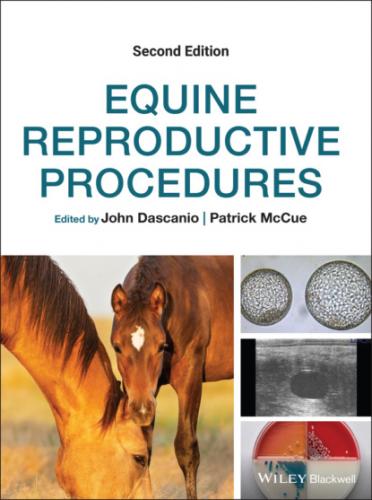In addition to chromosome analysis and karyotyping, it is a common practice in horse cytogenetics laboratories to test each case for the presence or absence of the SRY gene in the Y chromosome. The procedure involves polymerase chain reaction (PCR) with SRY primers and the genomic DNA of the horse in question. The test is useful for cases of sex reversal where a sterile female horse has XY sex chromosomes, with or without the SRY gene. The PCR test can also discover female horses that are mosaic or chimeric for a cell line carrying the Y chromosome.
Chromosome Analysis Time Line
Chromosome analysis from blood lymphocytes typically takes 10 working days; analysis from cell lines may take longer depending on the progression of cell cultures. The procedures and the turnaround time for the basic chromosome analysis, however, varies between service laboratories and depends on the complexity of each individual case.
Advanced Chromosome Analysis
In cases of aneuploidies (trisomies) or structural rearrangements (large deletions, translocations), fluorescence in situ hybridization (FISH) may be applied to confirm and refine the findings. The method uses fluorescently tagged DNA probes that are specific to individual horse chromosomes. These probes are hybridized to metaphase chromosome spreads and the results are observed under a fluorescence microscope. For example, FISH is particularly useful to identify small chromosomes involved in trisomies (Figure 22.5) or to determine the break and fusion points underlying structural rearrangements. However, the use of molecular cytogenetic methods is costly, laborious, and sets high demands on the microscopy and imaging systems, as well as on the skills of the personnel. Therefore, molecular methods are mainly used for research and less frequently for basic chromosome analysis service.
Figure 22.5 Fluorescence in situ hybridization (FISH) (a) with horse X chromosome probes (green and red; arrows) in an infertile mare with X‐trisomy (65,XXX) and (b) with horse chromosome 30 probes (red; arrows) in a developmentally abnormal colt carrying three copies of chromosome 30 (65,XY+30).
International Horse Clinical Cytogenetic Laboratories
Only a handful of laboratories worldwide offer chromosome analysis services for horses (Table 22.1). The type of analyses offered are quite similar, although specific requirements for samples, methods used, turnaround time, and cost may vary between laboratories.
Additional Comments and Future Perspectives
With the availability of the horse genome reference sequence for the past 10 years, several new cutting edge technologies have emerged for horse genome and chromosome analysis. Single nucleotide polymorphism (SNP) arrays can detect aneuploidies and small sub‐chromosomal deletions and duplications at a resolution not achieved by conventional karyotyping or FISH. An even more powerful approach is next generation sequencing (NGS), which allows the analysis of the whole genome sequence of an individual horse. Although SNP arrays and NGS are widely used in horse disease genetics, their application in clinical cytogenetics has been limited, likely because of the relatively high cost and demanding bioinformatics. Also, neither platform is able to ascertain cell to cell variations or accurately resolve mosaic/chimeric cytogenetic patterns.
Perhaps the most promising technology for next generation cytogenetics is the BioNano Genomics Irys® System, which utilizes nanochannel technology and high resolution imaging of high molecular weight DNA. The platform can detect almost any structural or numeric changes in the genome, including balanced translocations and inversions. It is anticipated that the BioNano Irys® System will fill a role between cytogenetics and NGS, given that the estimated price per sample will get close to that of conventional clinical cytogenetic analysis.
Table 22.1 Horse clinical cytogenetics service laboratories in different countries.
| Country, City | Laboratory | Director/Principal Investigator | Contact |
|---|---|---|---|
| Poland, Krakow | Department of Animal Reproduction, Anatomy and Genomics, University of Agriculture | Monika Bugno Poniewierska | [email protected] |
| Spain, Cordoba | Department of Genetics, University of Cordoba | Miguel Moreno‐Millán | [email protected] |
| Canada, Guelph | KARYOTEKK, University of Guelph | Allan W. King | [email protected]; http://www.karyotekk.com/home |
| USA, Texas, College Station | Molecular Cytogenetics, Texas A&M University | Terje Raudsepp | http://vetmed.tamu.edu/labs/cytogenics‐genomics |
Despite the promises of novel technology, it is unlikely that it will entirely replace conventional and FISH‐based chromosome analysis in horses. Traditional cytogenetics is still the most straightforward and cost‐effective approach and will remain the gold standard for the initial evaluation of breeding animals and individuals with reproductive or developmental disorders.
References
1 Arrighi FE, Hsu TC. 1971. Localization of heterochromatin in human chromosomes. Cytogenetics 10: 81–6.
2 Bowling AT, Breen M, Chowdhary BP, et al. 1997. International system for cytogenetic nomenclature of the domestic horse. Report of the Third International Committee for the Standardization of the domestic horse karyotype, Davis, CA, USA, 1996. Chromosome Res 5: 433–43.
3 Raudsepp T, Chowdhary BP. 2016. Chromosome aberrations and fertility disorders in domestic animals. Annu Rev Anim Biosci 4: 15–43.
4 Seabright M. 1971. A rapid banding technique for human chromosomes. Lancet 2: 971–2.
Further Reading
1 Durkin K, Raudsepp T, Chowdhary B. 2011. Cytogenetic evaluation of the stallion. In: McKinnon AO, Squires EL, Vaala WE, Varner DD (eds). Equine Reproduction, 2nd edn. Ames, IA: Wiley Blackwell, pp. 1462–8.
2 Lear TL. 2014. Chromosomal analysis. In: Dascanio J, McCue P (eds). Equine Reproductive Procedures, 1st edn. Oxford: John Wiley & Sons, Inc., pp. 77–82.
3 Lear TL, McGee RB. 2012. Disorders of sexual development in the domestic horse, Equus caballus. Sex Dev 6: 61–71.
4 Lear
